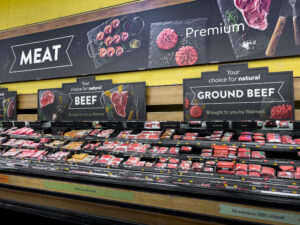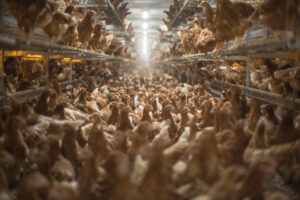Investors Chip In as Renewables Rise Toward Record Level
Global energy has gotten a climate-friendly boost as scientists say solar power alone could now meet the needs of California five times over.
By Tim Radford, Climate News Network

Power towers at a solar electricity facility in California’s Mojave Desert. (Jan Maguire via Flickr)
This Creative Commons-licensed piece first appeared at Climate News Network.
LONDON — Carbon dioxide levels might be soaring, and governments might be slow to reduce fossil fuel emissions and contain climate change — but the smart money could nevertheless be going into renewable sources such as wind and solar power.
The United Nations Environment Programme (UNEP) says green energy investments rose by 17% in 2014 to reach a total of $270bn — the first annual increase in three years, and just 3% behind the all-time record set in 2011 of $279bn.
In 2014, renewable energies added 103 gigawatts to global capacity. This is roughly equal to the output of all 158 nuclear power reactors in the US.
Wind, solar, biomass, waste-to-power, geothermal, small hydro and marine power contributed an estimated 9.1% of world electricity generation in 2014. This also represents a notional saving in carbon dioxide emissions of 1.3 gigatonnes, which is about twice what pours from the exhausts of the world airlines.
Markets mature
“Once again in 2014, renewable made up nearly half the power capacity added worldwide,” said Achim Steiner, executive director of UNEP.
“These climate-friendly energy technologies are now an indispensable component of the global energy mix and their importance will only increase as markets mature, technology prices continue to fall and the need to rein in carbon emissions becomes ever more urgent.”
But, according to scientists backed by the Carnegie Institution, there is much more that could be done. A team led by Earth system scientists Rebecca Hernandez, now of the University of California Berkeley, reported in Nature Climate Change that solar energy alone could meet the demands of the state of California in the US up to five times over.
Solar power systems based on photovoltaics could generate up to 15,000 terawatts of energy a year. And mirror-driven concentrating systems could add another 6,000 terawatt hours.
California — now in the grip of a calamitous drought that has been tentatively linked to climate change triggered by human investment in fossil fuels — is the most populous state in the US. The researchers calculated that more than 27,000 square kilometres of land would be fit for photovoltaic solar construction, and more than 6,000 square kilometres for concentrating solar power.
“Their importance will only increase as markets mature, technology prices continue to fall
and the need to rein in carbon emissions becomes ever more urgent”
But there is a darker side to the story of renewable energy. On the other side of the Rocky Mountains, scientists have been working on the much more complex carbon budget of biofuels, which deliver energy in liquid form.
They count as renewable energy because, although they emit carbon dioxide when burned, they do not, overall, add to the levels of greenhouse gases in the atmosphere. That is because biofuel crops take carbon dioxide from the air to grow their tissues for conversion to fuel, and return the gas through engine exhausts.
But there have been persistent worries. One is that the conversion of food to fuel may not be the most efficient use of cropland.
Destroy ecosystems
The approach remains carbon neutral, as long as farmers exploit existing cropland. But the danger is that farmers might plough up existing grassland, destroy ecosystems, and release ancient stored soil carbon to the atmosphere, to make global warming worse.
Environmental scientist Tyler Lark and colleagues at the University of Wisconsin-Madison report in Environmental Research Letters that, between 2008 and 2012, US farmers ploughed seven million acres of new land for corn and soy for conversion to biofuels intended as renewable energy for motor transport.
In the course of doing so, they could have emitted as much carbon to the atmosphere as 34 coal-burning power stations in one year — or 28 million new cars on the road.
Nearly a quarter of the land converted came from long-standing prairies and ranges, much of it within the Central Plains, from North Dakota to Texas. And much of this was planted with corn intended for conversion to biofuels.
“It mimics the extreme land-use change that led to the Dust Bowl in the 1930s,” Lark says. “We could be, in a sense, ploughing up prairies with each mile we drive.”
Your support matters…Independent journalism is under threat and overshadowed by heavily funded mainstream media.
You can help level the playing field. Become a member.
Your tax-deductible contribution keeps us digging beneath the headlines to give you thought-provoking, investigative reporting and analysis that unearths what's really happening- without compromise.
Give today to support our courageous, independent journalists.






You need to be a supporter to comment.
There are currently no responses to this article.
Be the first to respond.